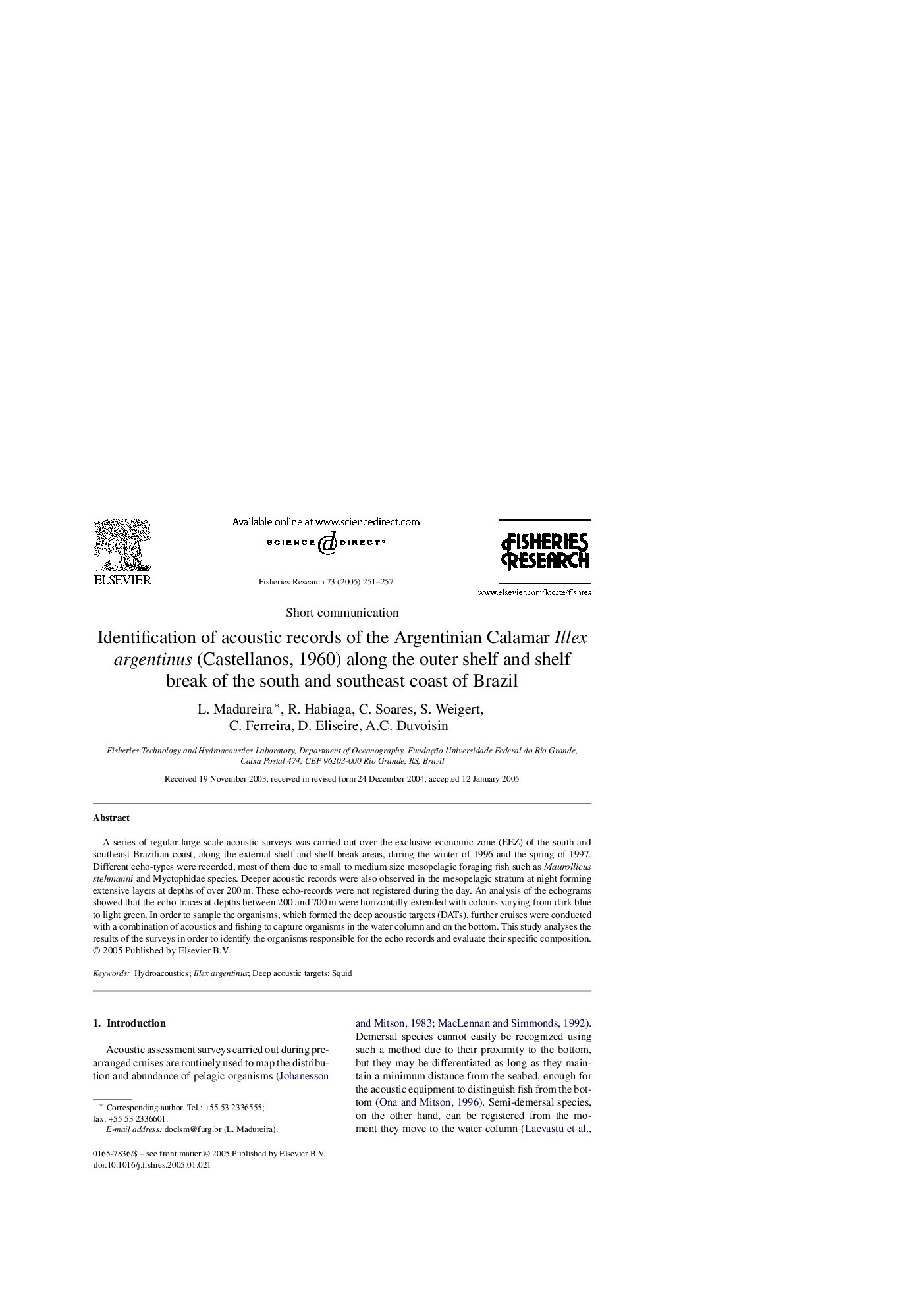| Article ID | Journal | Published Year | Pages | File Type |
|---|---|---|---|---|
| 9481788 | Fisheries Research | 2005 | 7 Pages |
Abstract
A series of regular large-scale acoustic surveys was carried out over the exclusive economic zone (EEZ) of the south and southeast Brazilian coast, along the external shelf and shelf break areas, during the winter of 1996 and the spring of 1997. Different echo-types were recorded, most of them due to small to medium size mesopelagic foraging fish such as Maurollicus stehmanni and Myctophidae species. Deeper acoustic records were also observed in the mesopelagic stratum at night forming extensive layers at depths of over 200Â m. These echo-records were not registered during the day. An analysis of the echograms showed that the echo-traces at depths between 200 and 700Â m were horizontally extended with colours varying from dark blue to light green. In order to sample the organisms, which formed the deep acoustic targets (DATs), further cruises were conducted with a combination of acoustics and fishing to capture organisms in the water column and on the bottom. This study analyses the results of the surveys in order to identify the organisms responsible for the echo records and evaluate their specific composition.
Keywords
Related Topics
Life Sciences
Agricultural and Biological Sciences
Aquatic Science
Authors
L. Madureira, R. Habiaga, C. Soares, S. Weigert, C. Ferreira, D. Eliseire, A.C. Duvoisin,
